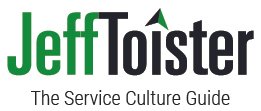This plan will help you train employees who serve internal customers.
An internal customer is anyone you serve inside your own organization. This can include several groups of coworkers:
People on your team
Your boss
People in other departments
You can also broaden it to include contractors, vendors, and other third-parties you work closely with to get your job done and ultimately serve your external customers. (See more here.)
The training plan guides you through the Serving Internal Customers course on LinkedIn Learning. Make sure your team has access to LinkedIn Learning before you begin.
Serving Internal Customers focuses on essential skills:
Building relationships
Exceeding expectations
Solving problems
This training plan uses a unique approach to training videos.
It uses a combination of self-paced learning and group facilitation. Lessons are divided into short segments, spaced out over four weeks. This approach maximizes learning and application while minimizing the disruption to your regular operations.
This guide covers:
Resources Required
You'll need these resources to use this training plan.
Access to Serving Internal Customers for all participants.
The exercise files from the course.
Contact LinkedIn Learning for pricing and subscription options if you don't already have access.
Estimated time needed: 1 hour per week
Group activities: 30 minutes per week
Individual learning: 30 minutes per week
Preparation
Get ready for the training by preparing yourself and your team.
Step 1: Create a training plan. Use the Workshop Planner to create an action plan.
Identify a goal for the training
Decide how to prepare your team
Create a plan to help the team use their new skills
Here's a how-to video:
Step 2: Announce the training. Tell your team about the training and what to expect. Address three questions for participants:
What is the training about?
Why is it important?
How are employees expected to use what they learn?
Keep your announcement simple. Consider sharing it in a team meeting. Follow-it up with a short email that contains the pre-assignments.
Step 3: Schedule team meetings. You'll be meeting with your team once per week for four weeks. Each meeting should take 30 minutes.
Step 4: Share pre-work. Share the pre-work with your team. I've included that in the next section.
Pre-work
Ask participants to watch the videos listed below before the first meeting.
Participants should also complete these exercises. The course includes an exercise file for each one:
Fill out page one of the Learning Plan worksheet
Make a list of internal customers
Week 1: Kickoff
The initial meeting should set the tone for the course. Start by reviewing the overall goal for the training that you identified on the Workshop Planner.
Next, discuss the following questions:
How is this course relevant to you?
Who are your internal customers?
What are some opportunities to serve internal customers over the next month?
What are some unique challenges when serving internal customers?
It's helpful to share a few best practices for getting the most out of this course:
Watch just one video at a time.
Complete the activity that goes with each video.
When possible, try using what you learned from the video before moving on to the next module.
Assignments for next week: Ask your team to watch the following videos and complete the related activities.
Serving remote coworkers (optional: for remote or hybrid teams)
Complete the Chapter 1 quiz
Week 2: Building Relationships
This week's theme is building positive workplace relationships. Positive relationships make it easy for coworkers to collaborate more effortlessly.
Start by reviewing the week one assignments.
Discussion questions:
What is your plan to create a stronger relationship with one key customer?
How can you serve remote colleagues with intention?
What can you do to build better relationships with difficult coworkers?
Assignments for next week: Ask your team to watch the following videos and complete the related activities.
Week 3: Exceed Expectations
The focus is understanding internal customers' needs so you can consistently meet or exceed their expectations. Start by reviewing the week two assignments.
Discussion questions:
What active listening skills did you use with internal customers?
How did you manage expectations with an internal customer?
How quickly do you respond to internal customers? What can you improve?
What is one opportunity you've had to go the extra mile? What happened?
Assignments for next week: Ask your team to watch the following videos and complete the related activities.
Week 4: Solve Problems
The final week is focused on service recovery. Start by reviewing the week three assignments.
Discussion questions:
What is one problem you took ownership of last week?
What is one problem you can anticipate? How can you prevent an issue?
How have you used the LAURA technique?
What can you do if you experience a toxic coworker?
What is one of your attitude anchors?
Remind participants that they can earn a certificate for their LinkedIn profile by doing the following:
Watch all the videos
Complete the chapter quizzes
Here’s a how-to guide if you need help accessing certificates.
Conclusion
It helps to go back to your original goals for this training and note the team's progress.
Your employees should show improvement in their internal customer service skills, but it's likely they also have areas for continued growth.
Set aside time to provide each person with coaching and feedback. You can also give them weekly reminders from the Customer Service Tip of the Week.



